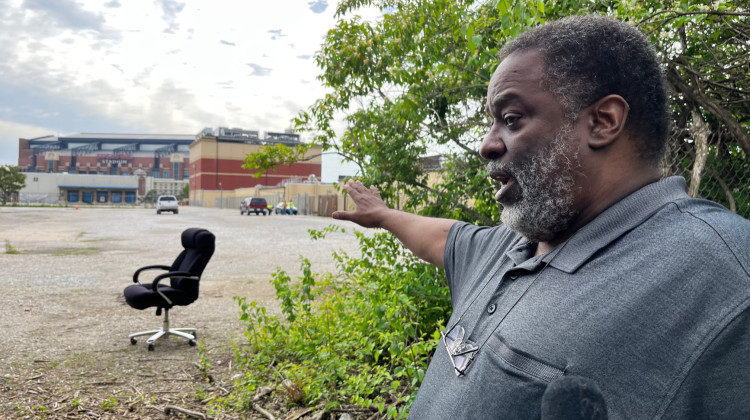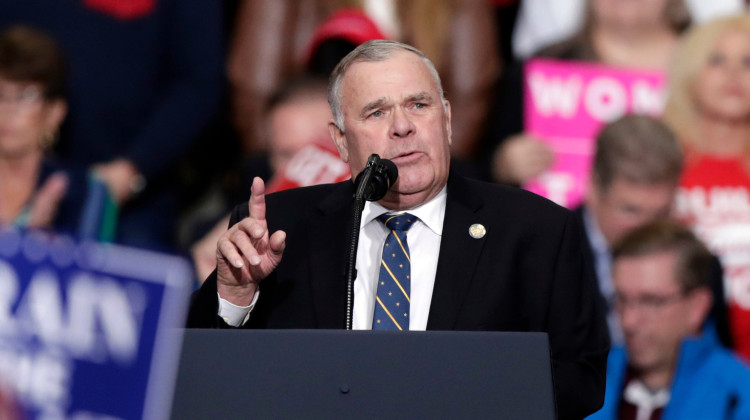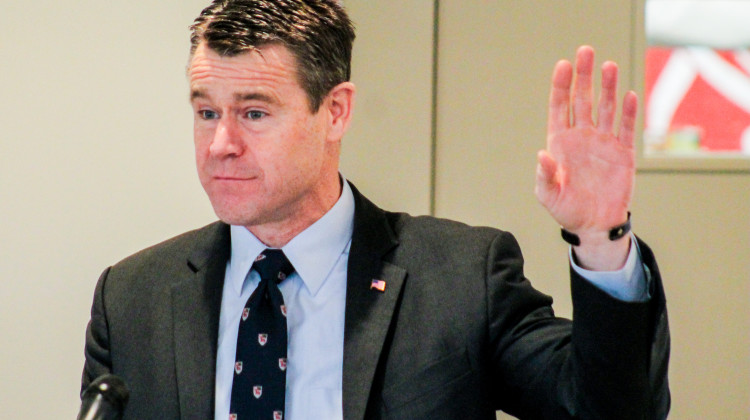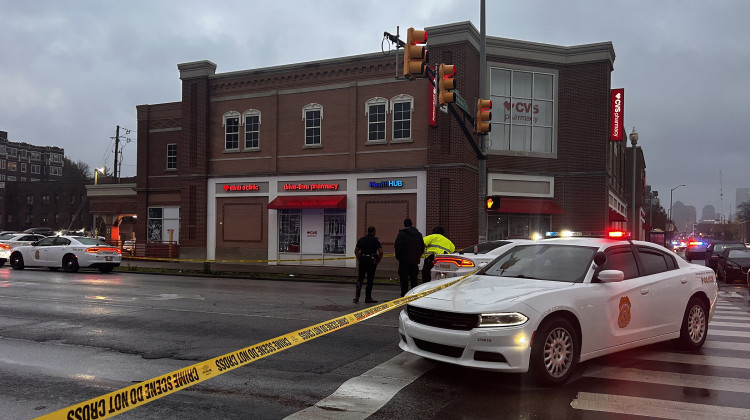A historic cemetery where the bodies of Indianapolis’s first Black residents were buried is the center of a development debate. An Indy Eleven stadium was planned on the site — that plan is now compromised by the city's interest in a new Major League Soccer team.
WFYI’s Jill Sheridan sat down with historian Leon Bates, who's been working with the city to learn how many are buried at the site. He estimates there could be as many as 15,000 bodies.
This interview has been edited for length and clarity.
Jill Sheridan: You know, you and I stood outside the old Diamond Chain factory about a year ago, before demolition started. And we talked about the history of this site on the riverfront there. We talked about the fact that many bodies that were interned at Greenlawn Cemetery likely had never been removed, and that was an issue as development was coming. How are you feeling today?
Leon Bates: You feel like you knew this was going to happen, you tried to warn people that it would happen. But myself and a few others were ignored. And what we had warned, has now come to fruition. Keystone has now been unearthed, right around 100 sets of remains.
But with that said, it was a common practice in the 19th century for unscrupulous cemetery operators to bury more than one person to a grave, to reuse a grave. And that's what they're discovering now, is that there's more than one set of remains that has come out of a single grave.
So we may have more than 100 people that we're trying to account for. The anthropologist is not done yet. They are still trying to sort that out. And we will eventually get a number from them.
Sheridan: The city does own part of this property. There’s a plan for a bridge across the White River. What have you learned, and what has the city learned in the past year that we didn't know a year ago?
Bates: The City of Indianapolis, DPW, and the mayor's office has come a long way. We are light-years from where we started, when we first talked to them. Most of the city employees had no idea. We're talking about people that their grandparents may not have been born when the cemetery was closed. So they had no idea. And what little was known was bad information. Several said, 'Well, we were told that everyone was moved.' Others just said ‘I'd never heard of it.' Some said, 'Well, yeah, I’ve heard of it. But you know, it's been gone for so long.'
You know, we had to explain, like I’m explaining to you now, what we know and what we don't know. The city started to really have some internal conversations and have some hesitation about building on that site. And that's what's happened before. That's how we got in this position. That Diamond Chain, built on top of the Peck Cemetery, this has been going on over there since 1917, when they built that first building.
Sheridan: So as we speak today, Keystone obviously still owns the property, although the city has offered to buy the property, and Keystone has a plan to remove the bodies and reenter them at a cemetery in Wayne Township.
Bates: Keystone wants to take the remains to Mount Jackson Cemetery, which is across the street from the Old Central State Hospital, the mental hospital that closed decades ago. Now, the Mount Jackson Cemetery across the street was abandoned decades ago.
And I think since the 1960s, the Wayne Township trustee has been responsible for taking care of it, which basically means the State of Indiana requires any abandoned cemetery to be maintained by the township trustee of whichever township it lives in and Mount Jackson was declared full in 1919.
Sheridan: What would you like to see happen on this site?
Bates: I've said that the best thing to do is to plant grass seed and just leave it alone. But I'm realistic enough to know that 25 acres in downtown, in any downtown area, is an itch that's going to get scratched. A developer is going to do that. Now what Indianapolis Mayor Joe Hogsett has proposed is for the city to purchase the property and turn it into some type of a park or memorial garden, or something like that.
That's to be decided later, but it would not be built on. I think that is probably the best of all alternatives. You could have signage there to inform the people who come in and out that you're actually entering a cemetery space, into a sacred space, if you will.
Sheridan: Leon, thank you for following this history and staying on this story here in Indianapolis. I really appreciate it.
Bates: You're welcome.
 DONATE
DONATE







 Support WFYI. We can't do it without you.
Support WFYI. We can't do it without you.